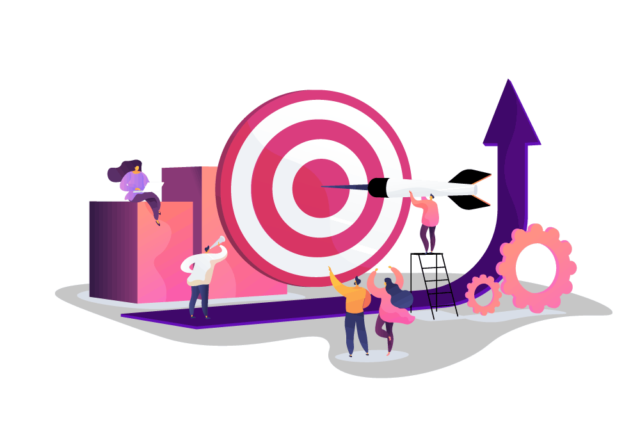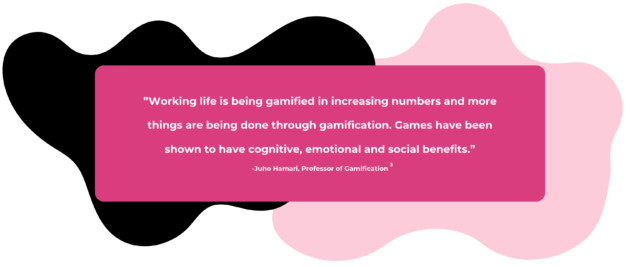What Is Gamification? – Examples and How to Make the Most out of It
What Is Gamification? – Examples and How to Make the Most out of It
Gamification has long been used in marketing. More and more companies have woken up to see the opportunities and benefits it brings, thus gamification has gained more and more foothold in working life.
But what is gamification? Why is it becoming more and more popular? And how to use gamification? In this article, we will answer these questions, among other things, so keep reading!
What is gamification?
The definition of gamification may be at its simplest that things are made to resemble games. Gamification means that familiar mechanics and elements from games are used in different environments with the aim of learning something concrete.
According to a more formal definition, gamification refers to a deliberate process in which virtually any activity, product, service, or organization is transformed into one that provides similar positive skills, experiences, and practices as games do. Its purpose is to facilitate changes in both the users and cognitive processes.¹
Throughout history, games have inspired people and we treat them with great passion. Games are everywhere around us, there are video games, card games, board games, and various different kinds of sports. Video games alone are played by up to 40% of the world’s population.²
If we include reality show viewers as part of the playing experience, like Who wants to be a millionaire? or other quizzes, the numbers of players rise significantly higher. Because who can watch a quiz show without trying to guess the right answer from the comfort of one’s own couch?

The main difference between gamification and games is that games tend to entertain, while gamification has a pre-defined purpose. So, they are not the same thing, even though they both use the same elements such as storytelling, points, and goals.
Gamified doing is a very typical human activity. Therefore, also gamification works for all ages and is suitable for many environments and uses. Only the content and goals of the game matter.
The power of gamification has been noticed in marketing, where it is already commonplace practice. For example, different bonus systems and customer levels are gamification. They engage and direct toward the desired action.
There is always a goal that is being pursued when using gamification. Very often it’s teaching something new to a target audience and gamification makes learning enjoyable. Fun can be one element in gamification, but not an end in itself.
Gamification is interactive, it activates and engages one to learn, turning one-way teaching into interactive learning. For example, Pokémon Go was very successful in getting kids and youth moving with the help of gamification.
Gamification rewards players for progress and achieving goals. People often do this in their daily lives as well. They may reward themselves with a treat on the weekend, for example, or the child receives pocket money when participating in household chores. And it works.
Gamification in itself is therefore not a new thing. The means have just changed. Today, technology offers completely new opportunities for gamification.
Gamification at work
Gamification is used in various fields of working life. It’s perfect for companies that want to motivate their employees and to do things in a new, inspiring way. Gamification usually receives a warm welcome as games have a positive charge to them.
Of course, you can ask employees what they think and what is their preferred way of learning. It opens doors for new ideas to be discovered. In order to learn something new, there needs to be a desire to learn. To make changes and reforms you need the people organization to be onboard. On the other hand, gamification can spark motivation towards something, for example through competition.
How does gamification appear in work life? Companies use gamification in many ways. Examples of gamification include employee onboarding, routine activities, getting to know new co-workers, introducing tools, streamlining an issue or process, improving well-being and motivation at work, or implementing a new strategy.
At its simplest, gamification can be, for example, making a PowerPoint presentation more interesting. Gamification activates people in a new way, making the lecture immersive and interactive. Gamification revolutionizes traditional lectures where the lecturer has usually been in the only voice. Only the sky (and the imagination) is the limit to exploiting gambling in the workplace.

The benefits of gamification for businesses
Gamification has become increasingly popular, and no wonder. What are the benefits of gamification? First, learning through gamification is perceived to be much more interesting and inspiring. It creates a positive WOW effect, the magical moment when a person is surprised positively. And it’s a good starting point for any occasion.
Through gamification, everyone gets to sit in the driver’s seat, because everyone has to be active in games. Players are left with impressive memory footprints. It can even be a task to put the company’s values in the form of a rap or a poem. Then they will be remembered in a completely different way than if they were heard in a lecture.
You constantly get feedback on what you are doing, which inspires you to continue. So, it’s also interactive. This way, gamification can increase motivation and new ideas can emerge. Gamification is an effective way to learn something new.
The employer can take advantage of gamification right at the beginning of the employment relationship. Or, if there are a lot of new employees starting at once, gamified training makes learning easier and faster. At the same time, the instructor’s own time is saved. The instructor also sees everyone’s progress in the game and is able to give feedback when needed.
Gamification makes your own progression and development visible. That is one of the
most significant elements of gamification. Progress can be shown in the game, for example, by means of points or levels (Level up, Congratulations!) Or, at its simplest, by the fact that the unfinished task points change color or shape. When one’s own doing and success are visualized, the player stays motivated to continue.
Storytelling can be used in gamification, for example, by jumping to another role and solving others’ problems. This evokes empathy and develops problem-solving skills. Gamification leaves room for creativity. You can even situate a game outdoors, then the players get a breeze of fresh air and the mind refreshes at the same time. Communication does not have to be one-sided, by adding video, audio, and images you make communication interactive.
Benefits of gamification in a nutshell:
- Interaction ─ one receives feedback that inspires to continue
- Active participation leaves a strong memory imprint
- Learning in a new way is effective and inspiring
- The effect on employer image can be positive
- One’s own progress and development are clearly visible, this increases motivation
- An agile way of teaching and training
Gamification adds excitement, interaction, and feelings of success and competence. Those are the elements that its effectiveness is based on.
Are you interested in the benefits of gamification for employee onboarding? Read more on our website: LINK
Resources: